Forest Fires 2012
3rd International Conference on Modelling, Monitoring and Management of Forest Fires
22 -24 May 2012
New Forest, UK
Overview
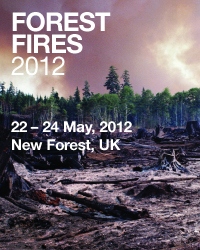
The third International Conference on Modelling, Monitoring and Management of Forest Fires took place in the New Forest Campus of Wessex Institute of Technology.
The meeting was organised by Professor Carlos A Brebbia of Wessex Institute, who was also co-editor of the conference book, together with Professor Giovanni Perona of the University of Torino, Italy.
The Conference was sponsored by the International Journal of Sustainable Development and Planning, and the International Journal of Safety and Security Engineering. It follows the success of the first two meetings held in Toledo (2008) and Kos (2010).
Forest Fires are very complex phenomena which, under the right physical conditions, can rapidly devastate large areas, as demonstrated by many recent events. Different approaches are required for controlling fires in rural areas as opposed to urban environments, and strongly depend on the physical characteristics of the surrounding region. They can depend on weather conditions, regional activities, forest type, as well as social and economic factors.
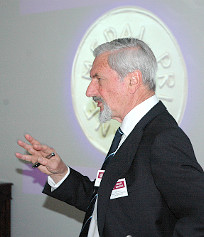
At present there is insufficient knowledge of the behaviour of fires and how they propagate. This lack of appropriate studies makes these phenomena very difficult to control and is one of the most important obstacles to the development of a reliable decision support system. Public concern in the topic is increasing as the uncontrolled fires may lead to major ecological disasters, and usually result in negative economic and health implications for the region.
Forest Fires analysis and mitigation requires the development of computer codes that can take into consideration a large number of different parameters. The Conference presentations discussed the latest research and applications of available tools to analyse and predict the speed of fires in an attempt to prevent or reduce major loss of life and property as well as damage to the environment. Professor Carlos A Brebbia opened the meeting by referring to the research carried out by his Institute to disseminate knowledge throughout the international community. This is done through the conferences, courses and other meetings as well as publications.The Conference series of Wessex Institute is well known and comprises approximately 25 meetings per year in different scientific and engineering disciplines - many of these dedicated to interdisciplinary research. WIT has also been involved in a series of meetings aimed to bridge the gap between sciences and humanities.
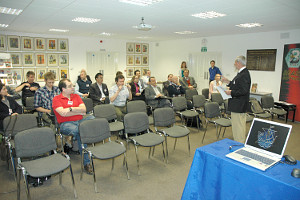 A major initiative of Wessex Institute in association with the University of Siena, has been the launching of the Prigogine Gold Medal to honour the memory of Nobel Prize winner, Ilya Prigogine, who was Co-chairman of one of WIT’s conferences. The Medal started in 2004 following the death of Prigogine, and has been awarded to a series of outstanding scientists whose work has been influenced by the Nobel Prize winner. The 2012 Medal was awarded to Professor Gerald Pollack, from Washington University, USA for his pioneering work on the Nature of Water. The ceremony took place in the Aula Magna of the University of La Marche in Ancona, presided by the Rector, Professor Marco Pacetti.
A major initiative of Wessex Institute in association with the University of Siena, has been the launching of the Prigogine Gold Medal to honour the memory of Nobel Prize winner, Ilya Prigogine, who was Co-chairman of one of WIT’s conferences. The Medal started in 2004 following the death of Prigogine, and has been awarded to a series of outstanding scientists whose work has been influenced by the Nobel Prize winner. The 2012 Medal was awarded to Professor Gerald Pollack, from Washington University, USA for his pioneering work on the Nature of Water. The ceremony took place in the Aula Magna of the University of La Marche in Ancona, presided by the Rector, Professor Marco Pacetti.
Carlos mentioned the WIT provides many other interdisciplinary activities and special projects. The Institute has also a very active Industrial Research Division which undertakes advanced types of computer simulation work. Current topics of interest are the study of corrosion protection and aerospace components. Over the years, the Division has developed a unique set of computer codes based on the innovative research on computational methods originating at WIT.
Conference Topics
The Conference covered a wide range of topics including:
- Air Quality and Health Risk
- Computational Methods and Experiments
- Detection, Monitoring and Response Systems
- Risk and Vulnerability Assessment
- Resource Optimisation
Invited Presenations
The Conference programme included a series of invited presentations:
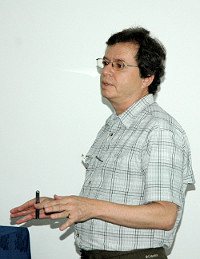
D B Rideout, Colorado State University, USA
‘Fire behaviour modelling based on simulated field plots’
R V Soares, University of Parana, Brazil
‘Fire risk at the wildland-urban interface: a case study of a Galician county’
M L Chas-Amil, University of Santiago del Compostela, Spain
‘Experimental determination of volatile organic compounds emitted by Thymus vulgaris’
L Courty, Institut Prisme, France
‘Modelling the exposure of firefighters to smoke based on measured data’
A I Miranda, University of Aveiro, Portugal
‘Wildfires – a New Forest Perspective’
D Hodge, Hampshire Fire and Rescue Service, UK
‘Understanding ignition of natural fuels by heated particles’
A C Fernandez-Pello, University of California at Berkeley, USA
‘Safety in forest fire fighting action: a new radiometric model to evaluate the safety distance for firemen working with hand-operated systems’
I Corgnati, University of Torino, Italy
Special Session
A special session was arranged by Dr Markos Bonazountas of Epsilon International, Greece to describe the ARC Fire project. This included five presentations on the following topics:
- Fuel type map of Europe
- Methodology for mapping forest fires in Europe
- Pilot application of the programme for mapping
- Fuel types modelling
- Forest fire management geoplatform and fuel maps
Excursions
The delegates had a busy programme consisting of a series of visits in addition to refreshments and lunches.
During the first lunch break they were taken to Lymington, which is one of the ancient ports of the New Forest. The most beautiful part of Lymington is its rich main street and the many Georgian houses on either side. The very busy Saturday market still takes place there. Its port is now small and mainly used by pleasure boats, but in 1345 it contributed more naval boats than Portsmouth to the fleet marshalled by England for the invasion of France. At the bottom of the High Street is a lane descending to the port with beautiful cottages, many of which are now restaurants and shops. Lymington became famous for its market and the economic life of the different traders in the town. From the 12th century, it was an important centre for the manufacturing of sea salt. The industry collapsed due to discovery of salt elsewhere. The delegates were able to fully enjoy the sights of Lymington due to the exceptionally nice weather.
The delegates and their partners were invited to a lamb barbecue in the WIT Campus which took place at the end of the first day and was another occasion to know each other better. The lamb – from a New Forest organic farm – was cooked to perfection and accompanied by a series of fresh salads and vegetables. The friendly atmosphere and exceptionally pleasant weather helped to cement the contacts made during the meeting. They also had the occasion of enjoying the Institute’s gardens at the best time of the year to see the New Forest.
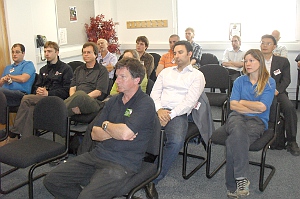 During the afternoon of the second day they were invited to take part in a technical visit arranged by the Division of Poole Fire Station in local wildfire prevention and fighting. The Station is a modern complex that has recently been commissioned. A talk was given by Andy Elliott, a Senior Fire Officer, and Andy Fail, a District Ranger. Following the presentation the participants were taken on a guided tour to a place surrounded by heathland, where the effects of a recent wild fire was shown, including the influence of ground topology and different parts of vegetation. The delegates returned to the Hotel in time for the conference banquet.
During the afternoon of the second day they were invited to take part in a technical visit arranged by the Division of Poole Fire Station in local wildfire prevention and fighting. The Station is a modern complex that has recently been commissioned. A talk was given by Andy Elliott, a Senior Fire Officer, and Andy Fail, a District Ranger. Following the presentation the participants were taken on a guided tour to a place surrounded by heathland, where the effects of a recent wild fire was shown, including the influence of ground topology and different parts of vegetation. The delegates returned to the Hotel in time for the conference banquet.

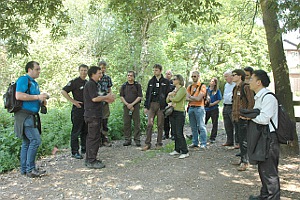
Excursion to Poole Fire Station
Conference Dinner
The conference banquet took place in an outstanding hotel which is a converted heritage property. The house belonging to the Queen Consort of England since ancient times, undertook several alternative uses, as a country house, a school for children of the aristocracy and finally became a luxury hotel, now called Lime Wood.
The hotel is renowned for the standard of its cuisine and the excellent wine cellar. The conference banquet took place in a private room where the delegates were able to sit around a large table. At the end of the dinner Carlos thanked the delegates for having attended the conference and coming to the banquet. He also offered them a piece of pottery specially commissioned by Wessex Institute. The pots were all individually made and glazed by a local potter and are very artistically painted. An important characteristic is the whole process is traditionally carried out from the collection and preparation of the clay, to the glazing prepared by the potter and the final product fired in a classical - ie wood fed – kiln.
The conference was very successful and will be reconvened in a place and at a date to be decided shortly.
Conference Proceedings
The proceedings of Forest Fires, pp (Print ISBN: 978-1-84564-584-7; eISBN: 978-1-84564-585-4) are available from WIT Press. Orders can be placed on the WIT Press web site at www.witpress.com or by email: This email address is being protected from spambots. You need JavaScript enabled to view it., telephone: +44 (0) 238 029 3223 or fax: +44 (0) 238 029 2853.Papers from the conference will also be hosted online at the WIT eLibrary as Volume 158 of WIT Transactions on Ecology and the Environment ISSN: 1746-448X, Digital ISSN 1743-3541). For more details visit the WIT eLibrary at http://library.witpress.com


 Wessex Institute
Wessex Institute